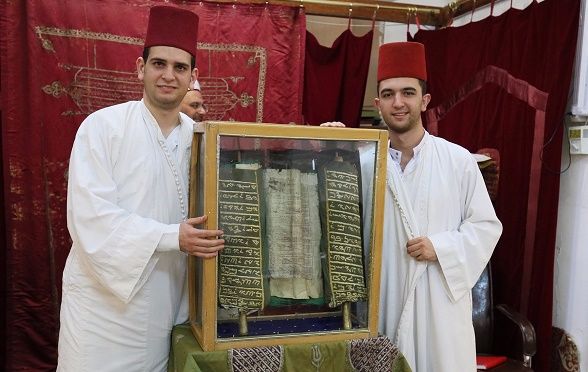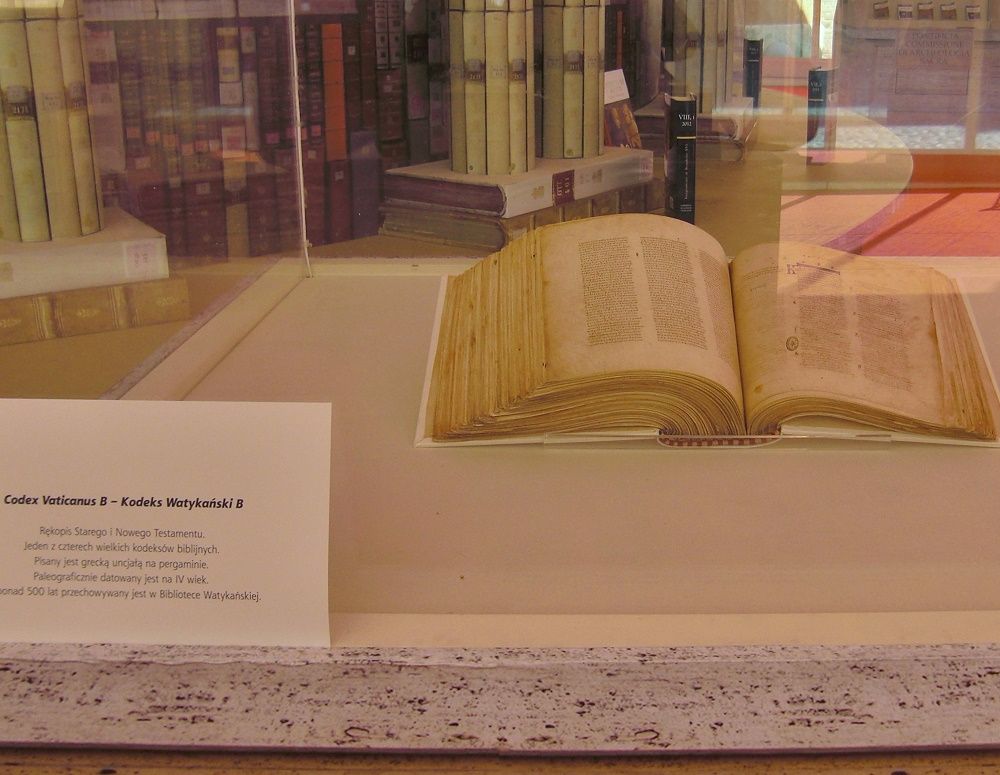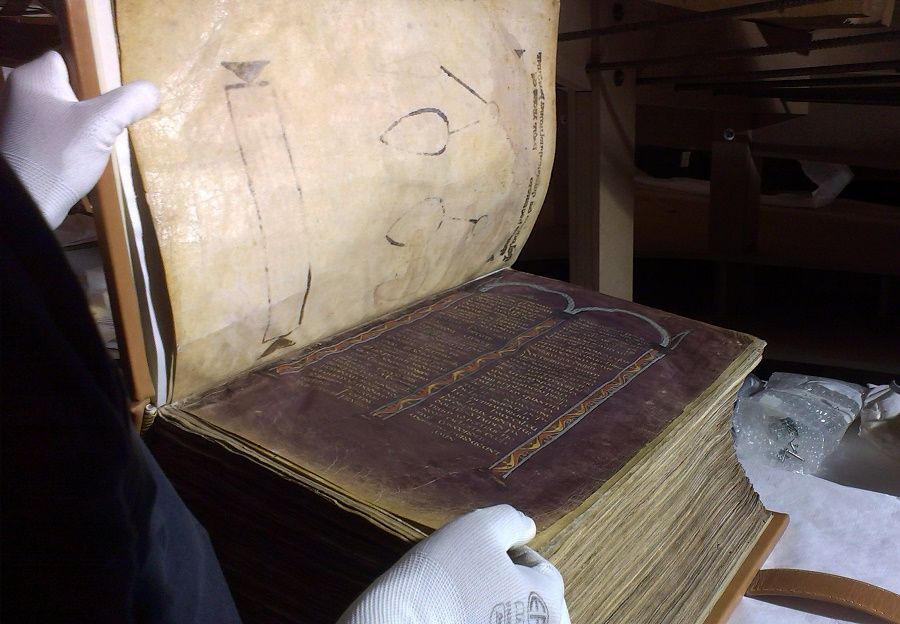 Edit article
Edit articleSeries
Part 8
Other Biblical Text Traditions

A 3rd/4th cent. papyrus (P. Duke Inv. 740) from a codex. The fragment contains the LXX version of Psalm 88. The recto has vv. 4-8 and the verso vv. 15-18. With Permission from Rubenstein Rare Book & Manuscript Library, Duke University.
We know that a variety of text forms existed in ancient Israel from the last centuries B.C.E. onwards. In addition to the proto-MT texts (outside Qumran), we find several other text traditions among the 230 biblical texts found in Qumran. Most of these texts would have been considered authoritative Scripture texts at the time, yet if they had not been discovered in the caves of Qumran, many of them would not have been known to us.
The only texts that have been transmitted consistently through the centuries were the texts that have been embraced by religious groups that continued into later times, that is, MT by Judaism, SP by the Samaritans and, in Greek, the LXX by early Christianity.[1]

a. Samaritan Pentateuch (SP) is the holy writ of the Samaritan community whose holy writings comprise solely the Torah, the Pentateuch, since the second century B.C.E. until today. The full text of SP, like MT, is known from medieval manuscripts dating to the ninth century C.E. onwards, and undoubtedly goes back to ancient texts. The Israelite Samaritans, as they call themselves, are closely related to the Jews, but they do not identify as Jews and therefore the SP is not considered a Jewish text, or as I would say, not a Jewish text any more.
Yet the Dead Sea Scrolls contain texts that are very similar to the SP, which demonstrates that this text type was also considered to be an authoritative Jewish text. These predecessors of the SP found at Qumran, named pre-Samaritan by scholars, share all the major features with SP. SP was created probably in the second century B.C.E. by slightly rewriting one of these pre-Samaritan texts to reflect the importance of Mount Gerizim (see especially SP’s tenth commandment).

b. LXX (Old Greek Translation) – The ancient Jewish translation of the Torah into Greek is named the Septuagint after the apocryphal story of seventy (two) translators producing the same translation (see the Letter of Aristeas). As the LXX differs from MT in many details, it is clear that the translation was based on a different Hebrew text. Parts of this text are sometimes preserved among the Dead Sea Scrolls.
The enterprise of rendering the Torah into Greek in the beginning of the third century BCE in Alexandria was a Jewish enterprise, created by Jews for Jews for Gentiles and Jews alike. The Letter of Aristeas mentions King Ptolemy II Philadelphus (287–247 B.C.E.) as the person who commissioned the translation. Although the letter itself is later than the events it describes, it likely contains a kernel of truth.
This translation was probably used in Alexandria by Jews in their weekly ceremonial reading from the first century B.C.E. onwards.[2] The Jewish background of the Greek translation of the Torah is well established, while that of the post-Pentateuchal books is not, although these too undoubtedly reflect a Jewish translation.[3]
Abandoning the LXX in Two Steps
Jews already began to see the LXX as problematic in the pre-Christian period, since it did not reflect the proto-MT text current in Palestine. This began a process of revision of the LXX towards the proto-Masoretic Text, reflected, for example, in such Jewish revisions as Theodotion (named kaige-Theodotion in modern research), Aquila (from Asia Minor, 125 C.E.), and Symmachus, in this sequence. As these new translations became more popular, the LXX translation gradually fell into disuse.
The emergence of early Christianity made the split between Jews and the LXX a foregone conclusion. In the first century C.E., when the NT writers quoted the earlier Scripture, they used the LXX or an early revision of the LXX that was close to MT, such as the (kaige)-Theodotion revision mentioned above. That was a natural development since the New Testament was written in Greek, and it was normal for its authors to quote from earlier Scripture written in the same language.
As a result of its adoption by Christianity, the Jewish-Greek translation of the LXX was held in contempt by the Jews, and was left entirely to the church. The Christians accepted the LXX translation as it was, generally without changing its wording.[4]
Traditional Judaism’s Relationship to Other Text Traditions
Despite the desire to believe in MT as the sole text form of Scripture, the rabbis were long aware of other text forms, at least those of SP and LXX. Nevertheless, from the rabbinic period and on, these texts have posed no threat to the supremacy of the Masoretic Text among Jews.
LXX – The Greek Septuagint was mentioned in very few places in rabbinic literature, but those quotations were accompanied by descriptions that the translators intentionally changed the contents of Hebrew Scripture in their translation concluding that therefore the LXX should be disregarded.[5] (The rabbis never considered the possibility that the LXX was based on a different Vorlage.)
The text of the LXX was not quoted in rabbinic literature as support for their halachic or aggadic deliberations, since no sources other than the Hebrew text was considered “scripture.” When in rare occasions the rabbis quoted from a Greek translator, they quoted from the Jewish translator Aquila,[6]not from Symmachus or Theodotion.
SP – The rabbis describe the Samaritan Pentateuch as a falsification of the Jewish Torah (j. Sotah 7.3; b. Sotah 33b; b. Sanhedrin 90b) and its text was never quoted in rabbinic literature.[7]
Targumim – The targumim were often quoted in rabbinic literature, not as witnesses to possible differences between their text and MT, but for their exegesis. Traditionally, thetargumim were considered the in-house commentaries of rabbinic Judaism on Hebrew Scripture, and their exegetical traditions were taken as supplementary to MT, even when a given translation might reflect a variant text.

Vulgate and Peshitta – The evidence of the Latin Vulgate and the Syriac Peshitta,[8] later to be sanctified in the Catholic and Syriac church traditions respectively, were beyond the horizon of rabbinic Judaism.
In short, none of these texts or “versions” posed any challenge to the notion that within Judaism MT served as the only text of Hebrew Scripture. Organized Judaism from the Rabbinic period onwards always considered MT the only text of the Bible, and therefore, by implication, the “original text” of the Hebrew Bible.
Qumran – In modern times, the Dead Sea Scrolls could have posed such a threat to MT, since they offer evidence of a relatively fluid textual tradition in antiquity. I do not know, however, of any official statement by any of the streams of Judaism concerning the implications of the biblical scrolls from the Judean Desert.[9]
On the other hand, the New Jewish Publication Society Tanakh translation (NJPS, more on this later), although based on MT, also provides editorial notes on readings from the LXX and the scrolls when according to the editors of NJPS these sources may present a reading better than the one of MT.
TheTorah.com is a 501(c)(3) nonprofit organization.
We rely on the support of readers like you. Please support us.
Published
December 8, 2017
|
Last Updated
December 25, 2025
Previous in the Series
Next in the Series
Before you continue...
Thank you to all our readers who offered their year-end support.
Please help TheTorah.com get off to a strong start in 2025.
Footnotes

Prof. Emanuel Tov is J. L. Magnes Professor of Bible (emeritus) in the Dept. of Bible at the Hebrew University, where he received his Ph.D. in Biblical Studies. He was the editor of 33 volumes of Discoveries in the Judean Desert. Among his many publications are, Scribal Practices and Approaches Reflected in the Texts Found in the Judean Desert, Textual Criticism of the Bible: An Introduction, The Biblical Encyclopaedia Library 31 and The Text-Critical Use of the Septuagint in Biblical Research.
Essays on Related Topics:









